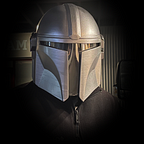Stepping into music history
A Visit to Abbey Road Studios (2019)
In 2019, I was fortunate to visit Abbey Road Studios in London. Here are a few photos of the immediate area, as well as historic Studio Two.
St. John’s Wood, an upscale neighborhood northwest of London …
Abbey Road is a main thoroughfare, usually busy with traffic. Nevertheless, visitors are frequently poised to leap out into the street, for picture-taking in one particular zebra crossing.
#5 Abbey Road — Gift Shop
A bit further down the street, the studio gift shop awaits. The entry walkway delineates prominent milestones in the studio’s history.
Artifacts in display cases offer a sense of that history.
Some of the many souvenirs.
#3 Abbey Road
Built in 1831 as a nine-bedroom Georgian house featuring a large rear garden area, the property was acquired in 1929 by The Gramophone Company, for renovation into a purpose-built recording studio.
The front building, as seen from the street today.
Lyrical entreaties, directing prospective graffiti artists toward specific designated areas (which are painted over every few months).
Once inside the building, Studio Two awaits.
Since its opening in 1931, the studio has been used for thousands of recording sessions, spanning many different genres. (Today, it’ll be used to record a small orchestra.)
Recording sessions make use of a legendary collection of classic microphones. Those and the vintage parquet floor convey a palpable sense of history — tantalizing hints of the many artists who have performed here in nearly a century of recording.
Hidden just beyond the far studio doors, off of a small vestibule: what had been a bomb shelter during WWII. In the years since, it has been used as an echo chamber for many recordings. Sections of sewer pipe provide acoustic diffusion.
More recently, the chamber’s unique acoustics have been sampled, and offered in the form of a plug-in for digital audio workstations worldwide.
Back in the studio, a staircase connecting the split-level facility. An unusual feature in a recording studio, it was added when the upstairs control room was built in 1957.
Inside the control room.
To accommodate a larger mixing desk (a Neve 88RS), the layout has been rotated 90° to the right of its 1960s-era setup. Closed-circuit video monitors provide select views of the studio below. Outboard gear and a patchbay occupy the wall to the right of the console.
Behind and facing the mixing desk, a recently-expanded client area.
Directly behind the sofa, one of many vintage analog tape machines that can be rolled in, when needed for a session.
To the client’s and mixer’s left, the view overlooking the studio.
And one last look at Studio Two, from the stairway landing just outside the control room door.
Back outside, a fond farewell to #3 Abbey Road — almost exactly 50 years to the day after the release of the album which gave the studio its present name.
Recommended Resources
Abbey Road (official website)
https://www.abbeyroad.com
Abbey Road (official digital audio plug-ins)
https://www.abbeyroad.com/audio-products
https://www.waves.com/bundles/abbey-road-collection
Abbey Road (book; history of the studio) — Alistair Lawrence
https://www.amazon.com/Abbey-Road-Alistair-Lawrence/dp/1408884208
The Complete Beatles Recording Sessions (book) — Mark Lewisohn
https://en.wikipedia.org/wiki/The_Complete_Beatles_Recording_Sessions
Recording the Beatles (book) — Kevin Ryan and Brian Kehew
https://en.wikipedia.org/wiki/Recording_the_Beatles
Text and photos © 2019, 2023 Ron Diamond. All rights reserved.
This material is not endorsed or sponsored by Abbey Road Studios or Universal Music Group.
